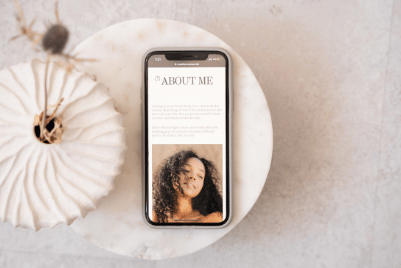Why Good Design Builds Better Brands


In today's visually saturated marketplace, good design isn't just a luxury but essential for brand success. Good design solves problems while looking aesthetically pleasing. It balances form and function, creating experiences that are both useful and delightful. For brands, this means design that communicates values, stands out from competitors, and connects with target audiences meaningfully.
First Impressions Matter
We've all heard the saying. "You never get a second chance to make a first impression." In branding, this initial encounter often happens through visual elements. Research indicates people form opinions about websites in just 50 milliseconds, and similar quick judgments apply to logos, packaging, and other brand touchpoints.
Think about Apple's minimalist aesthetic or Airbnb's friendly, accessible interface. These designs communicate volumes before a single word is read. A thoughtfully designed logo can instantly convey professionalism, innovation, or trustworthiness, while a cluttered, dated website may lead potential customers to question a company's relevance or attention to detail.
Builds Trust and Credibility
Good design signals competence. When consumers encounter professional, polished design, they subconsciously attribute those qualities to the brand itself. Poor design choices can undermine even the most reliable products or services.
The contrast between clean and cluttered design illustrates this perfectly. A medical practice with a well-organized, easy-to-navigate website inspires confidence, while one with mismatched fonts, broken links, and overwhelming information creates doubt. Clean, intentional design tells customers "We care about details and understand your needs." This becomes a powerful trust signal in any industry.
Makes Brands Memorable
In a competitive market, memorable design helps brands stand out. Consider Coca-Cola's distinctive red or Target's simple yet recognizable bullseye. These visual elements become mental shortcuts that help consumers identify and remember brands.
The most effective designs use the psychology of memory through distinctive color palettes, unique typography, or innovative visual systems. When McDonald's golden arches appear on the horizon, recognition happens instantly without additional explanation needed. This visual recall proves invaluable in crowded marketplaces where consumer attention continues to fragment.

Supports Clear Communication
Good design doesn't just look appealing. It clarifies and amplifies a brand's message. Through thoughtful typography, strategic white space, and intuitive organization, design helps audiences understand what matters most.
Effective design creates visual hierarchies that guide the eye and prioritize information. When website visitors can easily find contact information, or a product package clearly shows benefits, design is doing its job. Brands like IKEA excel at this, using simple illustrations to explain complex assembly processes without language barriers. This demonstrates how design can go beyond words to communicate efficiently.
Takeaways
From first impressions to lasting memories, good design strengthens every aspect of brand performance. It builds trust, enhances recognition, and clarifies communication while creating emotional connections with audiences. In today's competitive landscape, thoughtful design isn't an aesthetic luxury but a strategic necessity.
For businesses looking to improve their market position, investing in quality design offers returns far beyond visual appeal. Whether refreshing an established brand or building a new one, remember that good design doesn't just make brands look better. It makes them work better.
.png)






